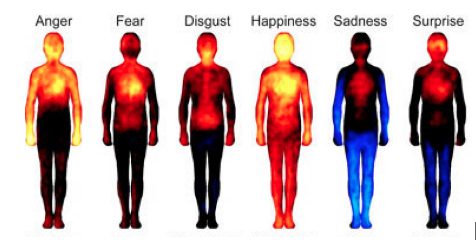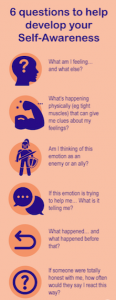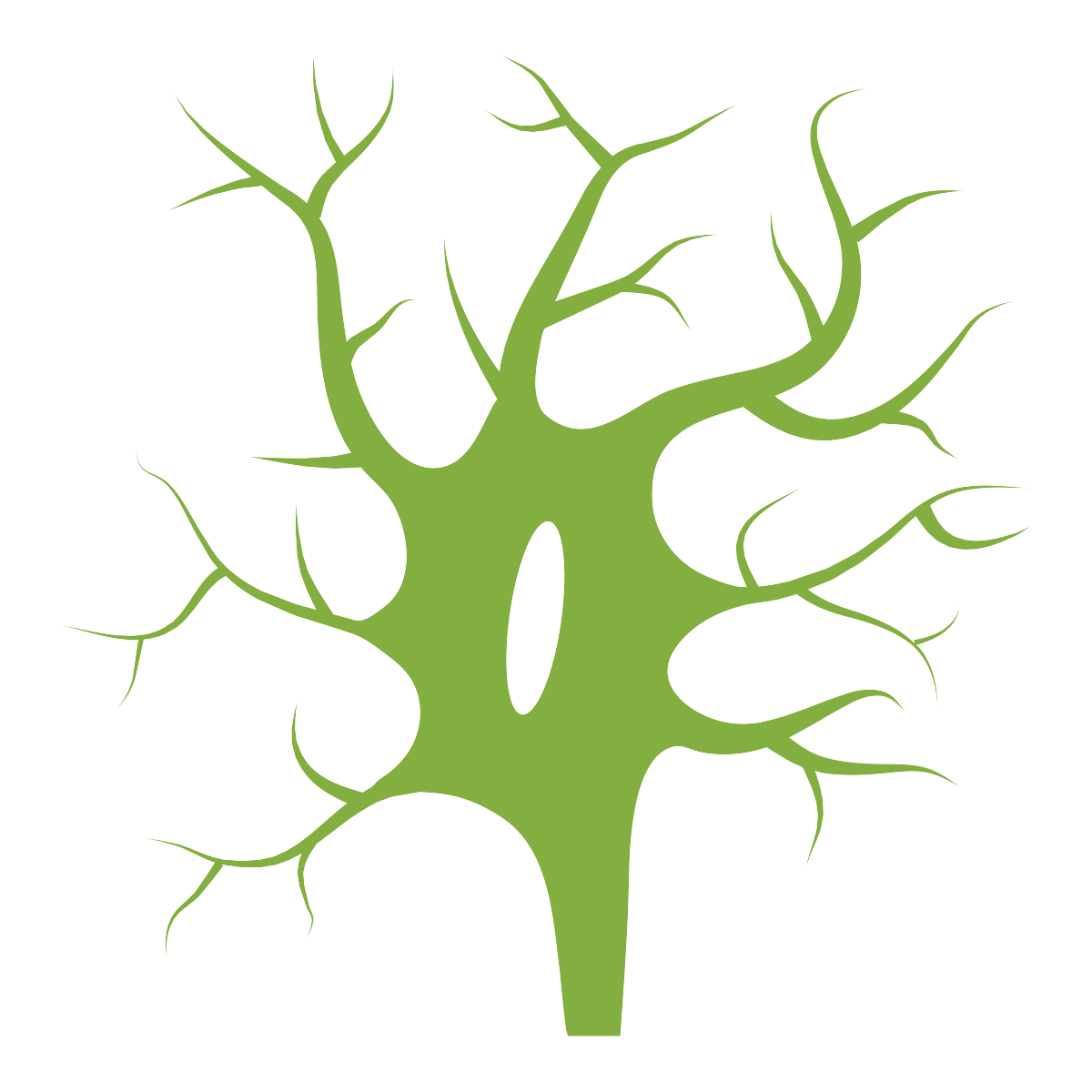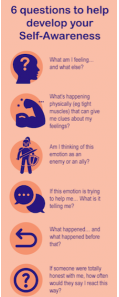How to Improve Emotional Intelligence: Tips to Practice Awareness
Do you want to know how to improve emotional intelligence? Specifically, concretely, what are steps to take to increase mindfulness and self-knowledge?
At Six Seconds, our vision is one billion people practicing the skills of emotional intelligence by 2039. So I asked our world-wide network of certified practitioners the following question: What would you recommend for people to practice EQ by increasing self-awareness?
The answers have been organized based on the Six Seconds Model of Emotional Intelligence, where the first step is called Know Yourself. It’s about becoming more aware; noticing what you do. In the Six Seconds model, there are two skills that you need to fine tune to be more consistently aware:
-
Enhancing Emotional Literacy — Increasing awareness & understanding of feelings, including the ability to accurately label emotions.
-
Recognizing Patterns — Identifying recurring reactions of thought, feeling, and action. Want a great tool to practice this? Read this article about T, F, A cards.
1. Get fluent in the language of emotions. To practice EQ, it’s essential to be emotionally literate. This is multifaceted; one part is to be able to name emotions really specifically – to differentiate between similar emotions, like feeling sad versus overwhelmed. And beyond that, it’s super helpful to know the profile of each emotion – to be able to define it and understand its message. Sadness is a feeling of loss of something I care about, and it helps clarify what’s important to me. Just like with any language, we pick up a good part of it by simply paying attention, but we may have to study up to become a real expert. Plutchik’s Wheel of Emotions and the Emotoscope Feeling Chart are two amazing resources for getting fluent in the language of emotions. We feel all these different, nuanced emotions, but we don’t always have the words to name them and make sense of them. And as we’ll go over in the next tip, bringing this cognitive awareness into the emotional realm is extremely powerful.
“It’s essential to build your emotional vocabulary.”

2. Name your emotions. Emotions can feel like a powerful current that sweeps us along, takes us for a ride. But neuroscience research has revealed a remarkably simple practice that helps us calm the waters: naming our emotions. It has been shown to lessen the intensity of emotions, simply by shining our cognitive spotlight on what we’re feeling. Read this article for a powerful testimonial of how this works when you are sitting in traffic. Try it out and let me know how it works for you. A slight variation is to name your emotions…
3. … in the 3rd person. Further research into the power of naming emotions recommends that we DISTANCE OURSELVES from the experience by using the 3rd person voice. Instead of saying, “I am frustrated,” I can say, “Josh is frustrated.”
Or, if that’s too odd, try saying, “I’m experiencing frustration” – or “One of my feelings is frustration.”
These distancing techniques combat the all-encompassing nature of intense emotions and are a natural calming mechanism. But remember — emotions are information — so after you name your emotions, stay with the feeling instead of immediately changing or fixing them, which leads us to our next tip…
“When I find myself reacting to a situation, I take a moment and name the emotion.”

4. Observe without trying to fix. Name your emotions, and then simply let that be for a few seconds. Let yourself be frustrated, or angry, or sad. We have been socialized to think of some emotions as bad, and because of that, we have a tendency to try to push them away as soon as we feel them.
It’s tempting to put a comma after your emotion, instead of a period. “I am frustrated, because he did this or that,” but this intensifies the emotion all over again. Instead, say “I am experiencing frustration.” And take a few deep breaths.
It takes about six seconds for emotion chemicals to be absorbed into the body, so give yourself at least that long… which brings us to the next tip.
“Be an observer of yourself. Pay attention to what you feel and how those feelings contribute, distract, enhance, or challenge you.”

5. Feel your emotions in your body. We often feel our emotions in our physical body. Anxiety before a job interview may leave us with tight muscles or sweaty palms, and as we walk to the door to pick up our significant other for a date we may feel like we are walking lightly and our hearts are pounding with excitement. These are only a few common examples of how we feel emotions physically. But researchers have found that different emotions are universally associated with feeling activation in specific parts of the body.
Consistent patterns of bodily sensations are associated with each of the six basic emotions: anger, fear, disgust, happiness, surprise and sadness. Emotional feelings are associated with discrete yet partially overlapping bodily sensations: decreased limb sensations with sadness, increased sensations in the upper limbs with anger, sensations around the throat and the digestive system with disgust, sensations in the chest with surprise and fear, and enhanced sensations all over the body with happiness.
“Train yourself to sense your emotions via sensations in your body.”


6. Bust the myth of bad emotions. We too often get stuck in an antagonistic relationship with our emotions, thinking of them as bad and something that we should suppress. But at the end of the day, emotions, even challenging ones like anger, are data. They exist to help us. Overcoming this mindset that there are good and bad emotions is one of the hardest parts of practicing emotional intelligence, but it’s also extremely liberating. Once you truly make emotions your ally, you are empowered to take control of your life. The first step is acknowledging that emotions are providing you with valuable information.
Emotions are neurohormones that we release as a response to our perceptions about the world. They focus our attention and motivate us toward a specific course of action. So there aren’t good and bad emotions. They all have a unique purpose and message. Fear focuses our attention on a threat and motivates us to protect ourselves. Sadness focuses our attention on a loss and helps us recognize what we care about. If you want to know how to improve emotional intelligence, the first step is to stop fighting your own emotions.
For a more in-depth look at this non-dualistic view of emotions, check out this article: Rethinking Feelings.
“Acknowledge emotions, not as good or bad, right or wrong, but as a source of information that help you gain self-awareness.”

7. Notice the build up before the trigger. In terms of how to improve emotional intelligence, another way is to hone your ability to recognize when you’re headed in a direction that you don’t want to go – before something really triggers you. The trigger is usually obvious. “He said this,” or “I can’t believe she did that.” But we have to remember that these events don’t occur in a vacuum. Our emotions are based on our perceptions of the world, and our mental state plays a big role in that. In fact, our perceptions aren’t as objective as we think. When we are already frustrated, we’re more likely to see slights. When we’re already afraid, we’re more likely to interpret something as a threat. So it’s essential that we check in with ourselves and know where we’re at – what our own biases could be in that moment. The better and quicker we get at this self check-in, the less likely we are to overreact or misinterpret something.
8. Recognize recurring patterns:
When ____stimulus______, I _____my typical reaction____.
This is may be the most transformative part of Know Yourself. And to understand it, we need to dive into a little neuroscience. Our brains have a natural tendency to follow neural pathways that already exist. So whether it’s in a relationship or by ourselves, we have a tendency to form and follow patterns. But that doesn’t mean that all our patterns are serving us well, or that we can’t change the ones that aren’t.
For example, “when I get angry, I bottle it up.” I learned it from my Dad, so it’s pretty well engraved in my mind. But with that awareness, I have the ability to notice when I’m just starting to react… and then I can chart another course, to practice responding instead of reacting. But the first step in the process was to simply recognize that pattern in myself.
“Notice when you set yourself up for low EQ moments that become low EQ habits.”

Marek went on to say, “There are two common traps. The first is passing critical judgment on others (e.g. “How stupid is that?” or “What in the world were they thinking?”) This kind of comment is a crutch to elevate or affirm one’s superiority over another person. The EQ moment begins when we learn to recognize the habit and then re-train ourselves to restrain from making any negative comment at all.
The second common trap is taking offense unnecessarily. This is another area that is a struggle for many of us. In today’s world we have been taught to take offense at even the most trivial matters. From taking offense, and feeling offended, people quickly escalate to criticism, judgment, bitterness, and unforgiveness, which hurts relationships and even our own health. The EQ moment: Notice the other person’s comment or action, and instead of taking offense and taking it personally, just consider it as data: “Hmmmm, that’s interesting.” Or, “I wonder what’s going on for her?” Or, “Wow, he must be really stressed…”
Curious about your own emotional intelligence? Take the free assessment

9. Write down your feelings throughout the day. Check in with yourself, and don’t think you have to choose just one feeling. Emotions are multilayered, complex. It’s totally normal to feel multiple at one time, even if they seem to contradict each other. Just writing them down is an important practice of validation and part of the answer of how to improve emotional intelligence.
“In the office, keep a feelings whiteboard divided for 2-3 parts of the day – morning, noon, evening – and list six or eight feelings. Then ask people to check mark their feelings during the day. See where the max check marks land.”

10. Remind yourself, “Emotions are data.” Emotions are valuable data that help you see more clearly. When we stop fighting them, ignoring them, or feeling suffocated by them, we gain an amazing resource. Remember what the purpose of emotions are: to focus our attention and motivate us toward a specific course of action. They are simply data, based on our perceptions of the world, about what to do. Know Yourself is about opening ourselves up to this data, and the next step is using it to choose exactly where we want to go.
Remember to download your free poster with tips to increase self-awareness. It’s a great thing to hang up in your office, bedroom, or any place you spend a lot of time.
“Start by noticing what you’re feeling, right now. Observe without judgment or trying to ‘fix’ anything; just notice your emotions a few times per day.”
“Notice your own strengths – and live into your strengths more fully.”
“Start with self-awareness. Acknowledge your emotions, where you feel them in your body, and name them. Give yourself one minute for this when you feel uneasy.”
Next in this series: How to Practice EQ: Tips for Choice
Last in this series: How to Live Meaningfully with EQ: Tips for a Purpose Driven Life
- Coaching Through the Emotional Recession: Three Practical Tips for Trauma-Informed Coaching - May 1, 2024
- Knowing Isn’t Coaching: Three Emotional Intelligence Tools for Professional Coaches - April 3, 2024
- Coaching Down the Escalator: 3 Emotional Intelligence Tips forCoaches to Reduce Volatility & De-escalate Conflict in a Polarized World - March 6, 2024


Self awareness is very much important in all spheres of life, as it helps us to understand different perspective of people and similarly can communicate them.
Different types emotions are quite obvious as per different situations we come across in our day to day life. Emotions give clues how someone feels. I will ask children to tick their feelings in their journal so that they will learn to identify their emotions at initial step of SEL.
Different types emotions are quite obvious as per different situations we come across in our day to day life. Emotions give clues how someone feels. If we are able to identify and name them then most of our problems will be reduced to a great extent .
Great learning. I learned Emotions are just the data, If we give aonly 6 sec pause then many ideas will flash.Every emotion gives a cetain message is really adds an amazing direction to the content.
It is a great idea to keep consciois track of our emotions which will help us to take wise decision in our day to day life.
It’s so much substantial and value based details in regards to Emotional wisdom.
I feel fortunate to become a part of this organisation.
This is a beautiful post that really lays out how to be self-aware without judgment. Anyone who follows these steps will find that they become less triggers and more emotionally balanced.
Being specific about our emotions was not a practice. How are you feeling? was to be polite and the standard response, ‘fine, thanks’ or ‘quite well thanks’ meant that we were obedient. Learning to identify and specify emotions is elite learning. I am delighted to learn the concepts and application. Thanks again Six Seconds.
Blog post are really impressive. Thank you for sharing the information!
thanks for the information
Very informative . Good reminders of how to think before we act.
Thanks, Gabrielle. Glad you enjoyed it!
that was just some great spots on emotional intelligence, i loved it and have started applying too
This is so useful. The best thing I did for the devs I managed was to introduce them to an EQ course. Was easy to develop their technical skills, but EQ training has been the most rewarding and beneficial.
Understand the language of emotions is so important especially in a disrutive world we are living in now. This article is renewing and refreshing! Tx Josh! Is there anywamy we can download the article
I love these practical tips! Makes the whole process accessible and easy to practice. thanks!
thanks
Being aware of our emotions is only one step toward mastering EQ. The next step one should take is clear awareness of why you’re having those emotions. The final step is to know how control and manage the causes (triggers) of your feelings/emotions.
So, 15 minutes/day should not only be able the first step, but the second and final steps too.
dear freedman,
I am a research scholar working on EI of employees. ur articles are very useful
I had a dought that whether Emotional awareness and awareness of Emotional intelligence is same of different.
And how to choose among the various scales available to measure . to name few Bar on Eq(i), MSICET, daniel golemen 5 factor model.
regards
Ripudaman k
I would say “awareness of X” is Not the same as “intelligence of X” — for example, being aware of numbers is not the same as being mathematically intelligent, right? Intelligence means accurately acquiring data and using it to effectively solve problems… that’s as true for emotional data or mathematical data.
In terms of theoretical model, it depends on your goal. here is a review of different emotional intelligence tests which might be helpful. If you’re looking for the most “pure intelligence” model then Mayer-Salovey is the way to go. If you’re looking for a practical model of USING emotional intelligence, then the Six Seconds Model of Emotional Intelligence is the most practical and actionable framework.
Emotional Fitness Training’s 12 Easy Exercises let you improve your EI easily and often in less than a minute. http://www.emotionalfitnesstraining.com/eft-easy-exercises/. The three most important? Remember what matters, be grateful, practice kindness.
Be an observer of yourself. Pay attention to what you feel and how those feelings contribute, distract, enhance, or challenge you. Awareness is the first step. ?
This tip by Dawn is great. It is important to always be self-aware, it helps your emotional intelligence out quite a fair bit, it allows you to be comfortable in yourself enough to be able to be aware of other people
Yes! That “neutral” self-observation is key. It’s why our original process for emotional intelligence education is called Self-Science. Like a scientist, observing self. Here is more info on the Self-Science process for social emotional learning.
I appreciate the content you provide
And we appreciate you saying so!!
🙂
I just learned of EQ from my connect group discussion and is very interested in learning more of this subject and how to work it through my daily life. Self awareness is the key to understanding and knowing who we are.
Thank you for this valuable information.
Bertha Washington
Thanks Bertha – welcome to the adventure!! To go deeper, I also encourage you to check out our free elearning courses: http://EQ.org/learn/courses
🙂
We all know the significance of being able to label and be consciously aware of our emotions but I think we also need to be able understand what “triggers” our emotions. Once we know “the why” and “the cost and benefits” of our emotions will we then be able and (hopefully) willing to do the work to change our behavior.
Thanks for the Tips 🙂
Thanks for sharing! I made a journaling app to improve my self-awareness and emotional intelligence. It’s a micro-journal (<140 character entries) so writing multiple entries a day takes a few minutes. Each entry is associated with a mood, so the app provides some really neat ways to self-reflect. For instance, I can see all the reasons of why I felt a particular mood (happy, sad, annoyed or stress) during the past few weeks. I’ve been using the app everyday for over 60 days and happier because of it. It makes it really easy to get into the habit of journaling. You can check out the free journal here – http://www.getstigma.com
Emotions are high energy boosters,
We just need to recognize them accurately to convert them for more optimal results for us and around us.
Reflecitng on my own emotions has given me a chance to recognise not just my own but also the patterns and behaviours of people around me. I was in a EQ workshop and the facilitator passed a brilliant statement during the session she said ” If you keep doing the same thing everytime do not expect different results everytime, if you need a different result then you need to change what you are doing” and this statement made so much sence because most of the time this happens with me…. since then i have been actually taking time out to sit and recognise my patterns and its already working wonders for me.
I think that that understanding what we are feeling will help us pinpoint why we react to certain situations the same way…..knowing why can help us identify the trigger and stop the process…even if it is familiar, it may not be “good”.
Reflecting on my feelings has allowed me to recognize patterns and change behaviors in myself as well as those around me.
I fully agree. all my life i have been blessed with a quick mind & make fast sense of sizing up others, but often lapsing into judgemental & even harsh assessments. my good instincts & gift of gab won me superficial success but not really empathatic connection.
after years & years of inability to connect with others emotionally…I finally began a journey I never KNEW existed or valued. Listening to my feelings.
Valuing not my quick wit & decision making , but rather ENJOYING sharing the authentic self I had hidden from getting wounded by others. Enjoying slowing down & paying more attention to
honoring myself & my needs & to feel at ease. all those years I spent arguing & debating with people & making issues black & white facts seem now so pointless & negative.
Getting in touch with feelings has allowed empathy to creep into my awareness & notice
more….how others are feeling…too.
EQ is a beautiful unfolding even at age 63… of how to be more integrated & consequently become
someone others WANT to communicate with….thankyou 6 SECONDS for being there on Facebook
teaching & inspiring us with clear helpful new challenges!
Actually stopping, reflecting and naming my feelings each day is having a big impact on both my well being and outlook. I now feel more positive and focussed in dealing with the challenges and opportunities in my life.
I am going to try the 15 minutes of self-introspection every day. I will keep a feelings notebook and review it at the end of each week.
Thank you for the idea! 🙂
Belinda Charles touched on something I recently heard from Josh as well: your emotions are your allies. I was in the non-beneficial habit of labeling emotions as bad, and in a dualistic mindset, bad is “them,” which means there has to be a “good us.” An unnatural split.
Thank you EQ community!
I like the notion of Shabir Latif. It requires a somatic vocabulary as well as an emotional one. Yoga has helped me there. What I am discovering is that body movement, and the lack thereof, is often an emotional issue as much as physical. Certain movements of my shoulders finally awakened the memory of my own sexual abuse when I was young. Being able to learn my somatic language and having some degree of emotional literacy helped me further process that experience. Frankly, there was an element of joy in it: I was experiencing freedom.
The moment I notice the feeling…..I habituated myself to find the sensations in the body and witness what is happening to them. Each time I do…I find the sensations moving and ultimately fade away and along with them ….feelings as well.
Dattatreya
I hope that people at home and organizations too understand the importance of EQ and it’s magical powers…..you only have to unlock your own being first……
It’s so much substantial and value based details in regards to Emotional wisdom.
I feel fortunate to become a part of this organisation.